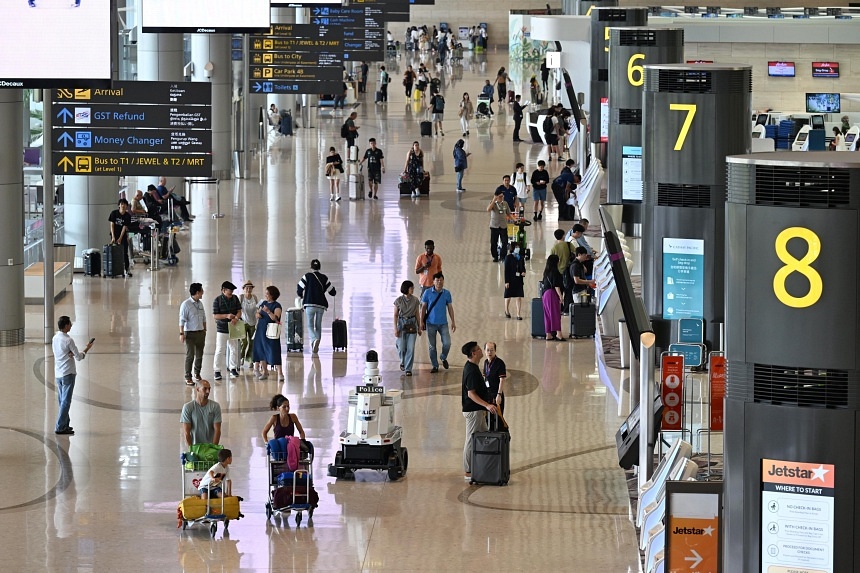SINGAPORE – Passengers and airlines at Changi Airport will pay higher fees and levies over the next six years, as the airport looks to finance a new $3 billion improvement plan across its four terminals and cover rising operating costs in areas such as energy and labour.
Departing passengers who start their trips at Changi Airport will continue to pay a total of $65.20 in fees for the next two years. But this will go up in stages from April 2027, reaching $79.20 in April 2030 – a 21 per cent rise.
For travellers transiting through the airport, the total fees levied on them will more than double, from $9 now to $21 in April 2030.
Meanwhile, airlines will need to pay about 40 per cent more to land and park their planes at Changi come 2030.
For narrow-body jets such as the Airbus A320, the landing, parking and aerobridge fee at the airport will rise every year from April 2025, starting from $1,200 per landing now to about $1,725 per landing in April 2030.
For wide-body planes such as the Airbus A350, the fee will also climb each year, from $3,600 today to $5,040 six years later.
Announcing the fee hikes and the multibillion-dollar investment on Nov 7, the Civil Aviation Authority of Singapore (CAAS) and airport operator Changi Airport Group (CAG) said the money will be used to improve existing services and infrastructure, such as baggage handling systems and the Skytrain, which connects Terminals 1, 2 and 3.
There are also plans to refurbish the 16-year-old Terminal 3, though this is still at the planning stage.
Justifying the latest increase in airport charges, which will kick in from April 2025, senior executives at CAG said the airport needs to add more capacity in the short term to meet an expected increase in demand.
With the opening of a third runway in the latter half of this decade, more flights will take off from and land at the airport, and more passengers will pass through it, CAG executives told reporters at a briefing on Nov 7.
Hence, it expects the four existing terminals at Changi to be operating close to their maximum handling capacity of 90 million passengers per year by the end of the decade.
This is before the future Terminal 5, which can handle 50 million passengers a year, opens in the mid-2030s to relieve some of the pressure.

